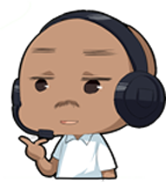原文已被隐藏,你可用 快捷键 - 或点击 显示原文 按钮来查看原文
第1段
1 .<-NARRATOR:->Listen to part of a lecture in an art history class. The professor has been discussing illustrated books.
旁白:请听一段艺术史讲座的节选。教授正在讨论插画书籍。
第2段
1 .<-MALE PROFESSOR:->I want to take a look at one particular book to give you an idea about what was involved in publishing illustrated books in the 1800s.
教授:我想要给你们看一本特别的书,让你们对19世纪出版的插图书有一个大致的了解。
2 .The book’s called The Birds of America, and the illustrator was John James Audubon.
这本书叫做《美洲鸟类》,插画家是约翰·詹姆斯·奥杜邦。
第3段
1 .So … The Birds of America … four volumes which contained illustrations of nearly every bird in the United States, over 400 birds, all hand-colored, all painted life-sized, the larger birds printed on the largest printing paper available at that time.
《美洲鸟类》一共有四卷,这本书里几乎囊括了美国所有鸟类的插图,超过400只鸟类,都是手绘的,都是活鸟大小的,最大的鸟在当时可用的最大印刷纸上印刷。
2 .This required a lot of dedication, and Audubon is best remembered as an incredibly meticulous, accurate artist, a very accomplished illustrator of the natural world.
这需要强烈的奉献精神,从而奥杜邦则被人们铭记为一位极其细致,准确的艺术家,一位很有造诣的自然世界插画家。
3 .And while there were other artists working on similar projects at the same time,
尽管当时还有别的艺术家也在为相似的话题作画,
4 .Audubon’s book remains the most well-known and successful of its kind.
但奥杜邦的书仍然是同类作品中最著名和最成功的。
5 .But, uh, let’s talk a bit about Audubon himself first.
但我们先来看看奥杜邦这个人。
第4段
1 .First of all, Audubon was not a traditional painter,
首先,奥杜邦不是一个传统的画家,
2 .and by this, I mean that he didn’t work in oils.
这句话的意思是,他不是画油画的。
3 .He preferred to use watercolor and pastel crayons, and he worked on paper instead of on canvas.
他更喜欢用水彩和蜡笔,他在纸上作画而不是在画布上。
4 .The thing is, Audubon considered the illustrations in his book, not the original watercolors, to be the finished product.
问题是,奥杜邦认为他书里的插画,不是原始的水彩画,是他所完成的作品。
5 .His watercolors were merely preparatory studies, most of which were painted while he was observing birds in the wild.
他的水彩画仅仅是准备状态,其中大部分是他在野外观察鸟类时候画的。
6 .These watercolors were then sent to his printer, who created the final prints for the book.
这些水彩画随后被送到他的印刷商那里,印刷商为这本书制作了最后的印刷稿。
7 .And Audubon was so concerned with accuracy that he often scribbled notes to the printer around the edges of these original watercolors.
奥杜邦太在意精确度了,以至于他经常在这些水彩画初稿边缘上写一些给印刷商的笔记。
第5段
1 .In fact, you might question whether producing a work of art was even Audubon’s goal.
事实上,你可能会质疑,制作一件艺术品是否是奥杜邦的目标。
2 .Now, when I look at an Audubon illustration, I see a work of art.
当我在看奥杜邦的插画的时候,我看到的是一件艺术品。
3 .But, it may make more sense to consider Audubon, first and foremost, as a naturalist, as a scientist.
但是,把奥杜邦首先看作一个博物学家,一个科学家可能更有意义。
4 .See, the early nineteenth century when Audubon was painting was a time of major scientific inquiry.
你们看,在奥杜邦创作画作的十九世纪早期是一个主要的科学探索时期。
5 .And an essential way of spreading scientific knowledge was through illustrated books.
并且传播科学知识的一种基本关键方式是通过那些插画书籍。
第6段
1 .<-FEMALE STUDENT:->So what did Audubon consider himself? An artist or a scientist?
学生:所以奥杜邦是怎么看待他自己的呢?一位艺术家还是一位科学家?
第7段
1 .<-MALE PROFESSOR:->I’m not sure the distinction between the two was all that clear in the 1800s.
教授:我也不确定这两者在十九世纪的时候区别是否鲜明。
2 .I think we can accurately state that … that the driving force in his art was getting the science right.
我认为我们可以比较准确地说...他艺术创作的驱动力是让科学正确。
3 .And this was perhaps a point that critics of his artwork at the time just didn’t appreciate.
这可能是那个时期的批评家们对于他的艺术作品所不理解的点。
第8段
1 .Audubon also studied birds in ways that didn’t directly inform his art.
奥杜邦研究鸟类的方式并没有直接影响到他的艺术。
2 .Uh, you know what bird banding is, right?
啊,你们知道什么是鸟类环志(套圈),对吧?
3 .A bird has a band attached to its foot so we can learn about things like migration patterns.
一只鸟的脚上有一条带子,这样我们就能了解(它们)迁徙的模式。
4 .Well, the first recorded instance of anyone doing that, it was Audubon.
第一次有记录的这种研究就是奥杜邦做的。
5 .Another example, a common belief at the time was that vultures use their sense of smell to find food.
另一个例子是,当时人们普遍认为秃鹰用它们的嗅觉来寻找食物。
6 .Audubon didn’t believe that, so he tested it.
奥杜邦并不相信这个,所以,他验证了一下。
7 .He put a large painting of a dead sheep in a field, and sure enough: vultures found it and started pecking at it.
他把一幅画着一只死羊的大油画放在一块地里,果然,秃鹫发现了它,开始啄它。
第9段
1 .Now, Audubon’s work was very accurate, and we know this because we can compare his illustrations to the birds around us.
奥杜邦的作品很准确,我们之所以知道这一点,是因为他画上的鸟和真鸟差不多。
2 .But sometimes it’s not possible to check.
但是有些时候是无法检验的。
3 .There’re actually several birds in his book that no one’s ever seen.
事实上,在他的书中有几只鸟是没有人见过的。
4 .These are sometimes called Audubon’s “mystery birds,” because even though he drew them, there’s no evidence that they exist in the wild.
这些鸟被称为奥杜邦的神秘鸟儿,因为即使他画了这些鸟,也没有证据证明它们真的在野外存在。
5 .For someone who’s respected as a naturalist, isn’t it strange to think that he drew some birds that don’t appear to be real?
对于一个受人尊敬的自然主义者来说,想到他画了一些看起来不像真的鸟不是很奇怪吗?
第10段
1 .For example, there’s an illustration that appears to be a type of warbler, a small bird.
例如,有一幅插图似乎是一种莺,一种小鸟。
2 .It has a white ring around its eyes and white bars on its wings.
在它的眼睛周围有一圈白色的环,翅膀上有白色横线。
3 .No one’s ever seen a warbler like this,
没有人见过这种莺,
4 .so some people wonder if Audubon maybe forgot certain details about this bird when he painted it,
所以有些人想知道奥杜邦是不是在画这只鸟的时候忘记了一些细节,
5 .or that he copied another artist’s work. But considering that Audubon was such a meticulous artist.
或者他抄袭了其他艺术家的作品。但是考虑到奥杜邦是一个如此一丝不苟的艺术家。
6 .Well, there might be a better answer.
嗯,也许有更好的答案。
第11段
1 .Hybridization is something that’s well known in birds.
杂交是鸟类中知名的现象。
2 .And it definitely explains a rather unique-looking duck Audubon painted.
这也解释了为什么奥杜邦画了一只看起来很独特的鸭子。
3 .He himself suggested that maybe it wasn’t an unknown species, but a hybrid, born from two different species.
他自己提出,也许这并不是一个未知的物种,而是两个不同物种的杂交后代。
4 .Since then, this particular crossing of species has actually been recorded, both in the wild and in captivity,
自从那时候开始,这种特别的杂交物种就被记录了下来,不管是在野生鸟类中的还是在圈养鸟类中的。
5 .so it turns out that Audubon was right, and this duck actually was a hybrid.
结果证明奥杜邦是对的,这只鸭子实际上是杂交的。
